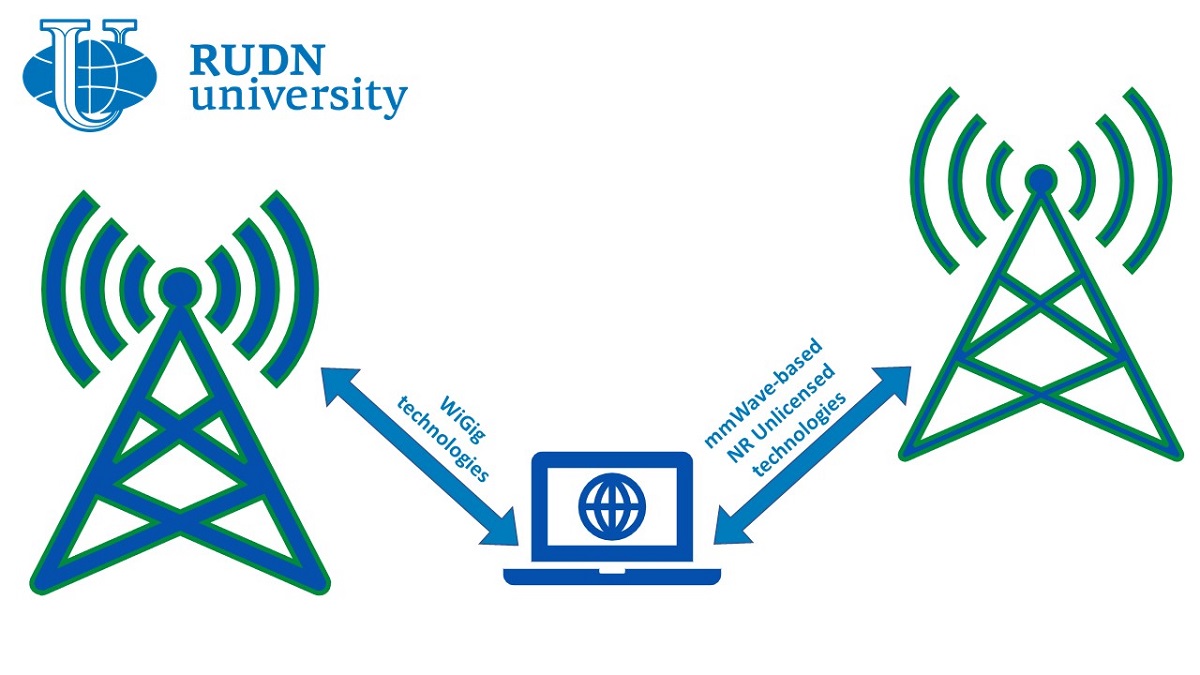RUDN Mathematicians: 5G will cope with traffic when using WiGig
Under 5G using New Radio (NR) technology, two frequency bands (bandwidths)are allocated. P, below 6 GHz, was used in previous standards, the second includes frequencies from 24.25 GHz to 52.6 GHz — oncorresponds to the beginning of the millimeter wave range.The second band was allocated in the expectation that 5G will be used in applications, which require a fast and stable connection, for example, in VR and ARapplications. However, this range may not be enough. Especially for use in places with large crowds of people — in the central areas of cities, in shopping centers,where the traffic load isconstantly changing. Therefore, it is necessary to create new protocols to use new frequencies.
“It is expected that the emerging 5G cellular systems, which are capable of operating in the millimeter wave frequency ranges, will have a widerbandwidth. These networks are supposed to develop in densely populated places,where the load on traffic can vary significantly,whichleads to “congestion” in the network. The mass introduction of new services that require high bandwidth can lead to a lack of range even for 5G systems. Here, only millimeter-wave communication technology is potentially able to cope with significant traffic loads — Anastasia Daraselia, Postgraduate Student, Institute of Applied Mathematics and Telecommunications, RUDN University.
RUDN mathematicians have proposed using 5G NR technology along with a millimeter wave range of about 60 GHz, a technology known as WiGig,whichallows data to be transmitted wirelessly at speeds of up to 10 Gbps per second. Mathematicians have suggested that WiGig will help 5G networks cope with traffic changes in places with a large number of users. To test this, they created a mathematical model and calculated how these two technologies would work together.
Mathematicians considered a model in which WiGig base stations (unlicensed band) are located in the same area along with NR (licensed band) base stations. Network users are divided into two groups — one uses only WiGig,others — both technologies at the same time. Users move and periodically block each other’s direct access to the base station. RUDN mathematicians analyzed the model and calculated the optimal network parameters that will smooth out traffic fluctuations and cope with user requests. For example, the so-called competitive window (the period of time that the station waits before transmission) should be selected separately for each deployed network, and if this is not possible, it is recommended to use its higher values.
“We have built a mathematical model that can describe the possible data rates in networks that simultaneously operate in both licensed and unlicensed spectrum. Our numerical results showed thatthespeed achieved by such devices is primarily determined by the initial size of the competitivewindow, which, in turn, is highly dependent on the parametersof the system and the environment”, — Anastasia Daraselia, Postgraduate Student, Institute of Applied Mathematics and Telecommunications, RUDN University.
The results are published in the journal IEEE Transactions on Vehicular Technology.
Sergey Ivanov, a scholar from St. Petersburg, has been named the first winner of RUDN University’s International Prize for Scientific Achievements in Mathematics, worth 5 million rubles.
Products derived from microalgae represent a cutting-edge development in the field of bioeconomy. The potential of this biological resource was discussed at the international research seminar “Foundations for a Green Sustainable Energy”, part of the BRICS Network University’s thematic group on “Energy”. The event was organized by the Institute of Ecology at RUDN University.
Ambassadors of Russian education and science met at a conference in RUDN University to discuss how they can increase the visibility of Russian universities and research organizations in the world, and attract more international students in Russia.
